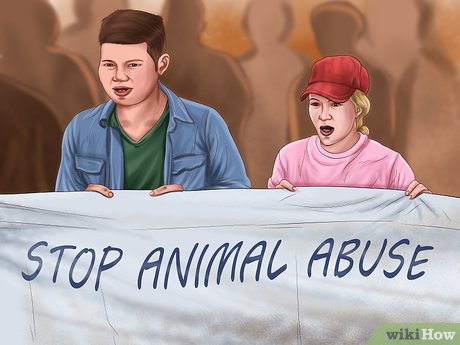Farm animal abuse is a pressing issue that demands the attention of conscientious citizens. Animals raised for food, labor, or companionship are often subjected to inhumane treatment that goes unnoticed by the public. It is essential for animal lovers and advocates to understand how to recognize and report instances of abuse in farm environments. This article delves into the multifaceted aspects of farm animal abuse and provides guidance on appropriate reporting mechanisms.
Understanding Farm Animal Abuse
Farm animal abuse manifests in various forms, ranging from neglect and inadequate shelter to outright cruelty. Neglect can include insufficient food and water, lack of medical care, and failure to provide a safe and clean living environment. Abuse may also involve physical violence, such as beating or torturing animals. Recognizing these signs is crucial for anyone who is concerned about animal welfare.
Type of Abuse: Physical and Psychological
Physical abuse is often the most visible form and can be identified through injuries, unkempt appearances, or abnormal behaviors in animals. Psychological abuse, however, is subtler and can involve isolation, fear-inducing treatment, or living conditions that cause distress. Both forms of abuse can wreak havoc on an animal’s well-being and should not be overlooked.
Signs of Abuse: What to Look For
When combing through a farmyard, there are several indicators that may suggest maltreatment. Animals may exhibit abnormal behavior, such as excessive aggression, withdrawal, or signs of chronic stress. Physical symptoms can include emaciation, lacerations, or infections that are left untreated. Ensuring that animals are provided with proper veterinary care and humane treatment is essential in maintaining their health and dignity.
Other signs exist beyond the physical and behavioral. A farm that lacks proper facilities, such as clean water sources or adequate shelter, raises red flags. The presence of overcrowded conditions is another indicator; animals should have enough space to move freely without constantly coming into contact with each other.
Legal Framework Governing Farm Animal Protection
In the United States, animal welfare laws vary by state. While federal laws provide some protection against cruelty, states generally govern the specifics of animal care, including housing, handling, and veterinary requirements. Understanding the legal framework can empower individuals to take informed actions when reporting abuse.
The Animal Welfare Act is a significant piece of legislation that establishes minimum standards of care for animals in research and exhibition. However, it does not comprehensively protect farm animals. Several states have enacted their own legislation regarding the treatment of farm animals, leading to a patchwork of regulations that can be confusing. Familiarizing oneself with both state and local laws regarding animal welfare is crucial for grassroots activism.
How to Report Suspected Abuse
If you suspect animal abuse on a farm, it is vital to approach the situation judiciously. Here are steps that should be taken to report potential abuse effectively:
- Document Evidence: Keep detailed records of your observations. Take photographs if safe to do so, and note dates, times, and specific signs of abuse you witness. This documentation can be pivotal in investigations.
- Contact Local Authorities: Reach out to local animal control agencies or humane societies. These organizations often have specific procedures for reporting abuse and can initiate investigations.
- Notify Law Enforcement: If the situation appears severe, alert local law enforcement. Criminal activities involving animal cruelty may fall under criminal statutes and require immediate action.
- Engage Animal Protection Organizations: Entities such as the Humane Society or PETA provide resources and can assist with reporting. They can also help mobilize additional community support.
It is wise to remain anonymous if desired, but be prepared that your information may be disclosed during investigations. Your welfare should remain a priority, especially if the accused party may react negatively.
Community Involvement and Advocacy
Awareness and community engagement are essential components in addressing farm animal abuse. Educating fellow community members about the signs of maltreatment can create a culture of vigilance and support for animal welfare. Forming alliances with local organizations can strengthen advocacy efforts, allowing for a united front against injustices.
Participating in local rallies, volunteering at animal shelters, or attending workshops about animal rights can deepen understanding and amplify efforts against abuse. Encouraging dialogue and open discussions about ethical farming practices can also foster a more humane approach towards animal husbandry.
Conclusion: A Collective Responsibility
Reporting farm animal abuse is not merely a personal endeavor; it is a collective responsibility to uphold justice for the voiceless. Through vigilant observation, knowledgeable advocacy, and robust community engagement, individuals can effect meaningful change. By standing against cruelty, society not only protects the welfare of animals but also reinforces the values of compassion and respect for all living beings. The fight against farm animal abuse is paramount; it requires a concerted effort from each of us to ensure a more humane world.








